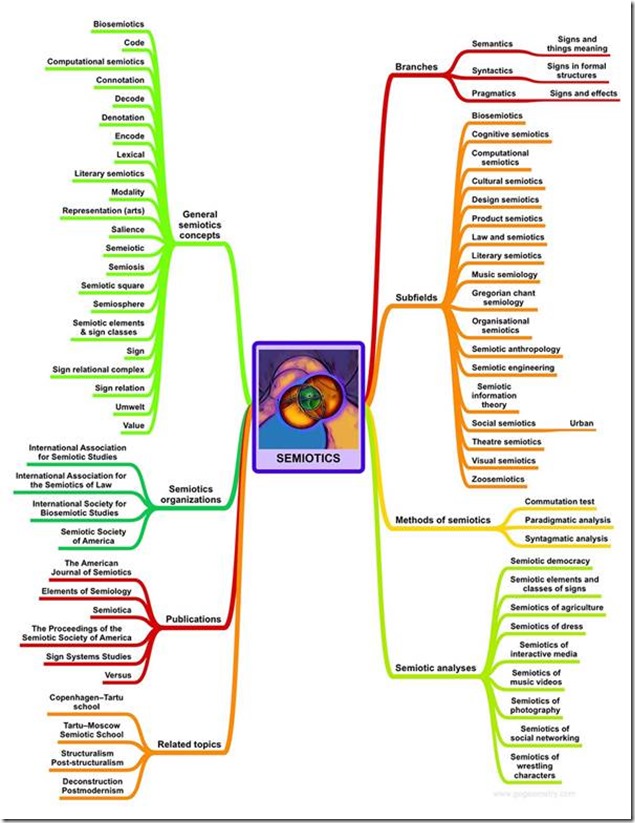The research and discipline of Cultural Semiotics has been about for 100 years. Cultural Semiotics was first founded by Lotman and others like Cassier and Uspensky and predates the construction of Behaviourism. The discipline of Cultural Semiotics serves as a Transdisciplinary approach to understanding culture.
All symbolic forms and all unconscious memory of a community are parts of the Semiosphere. All symbolic expressions of living and being constitute the foundations of culture. In this regard, sign and symbol systems reveal culture and culture is identified with all sign and symbols. All symbols and signs help culture create structures – Structures DO NOT create culture.
Semiotics is any symbol or sign that creates and anchors to semiosis (meaning and purpose). For example, the construction of symbols/myths in music, song, religion or theatre are all critical aspects of how symbols create meaning.
You will hear none of this across the globe in any discussion of culture in safety.
If you listen to the many silences in safety about culture, you will realise most commentators who proclaim expertise in culture, are NOT talking about culture (https://safetyrisk.net/category/safety-culture-silences/).
The totality of all symbols and signs is called the Semiosphere, in a similar way as we understand Biosphere or Atmosphere.
The Semiosphere can be mapped as in Figure 1. Semiosphere.
Figure 1. Semiosphere.
A semiotic approach to culture transverses all approaches to culture because all disciplines use sign/symbol systems to express semiosis (meaning). Ina. Similar way the discipline of Education transverses all disciplines because all disciplines include learning as a foundation of being enculturated in that discipline.
Some studies like Semiotics and Education are known as generalist disciplines because of their power to transverse all disciplines. When we are open to a transdisciplinary approach to learning, such disciplines are helpful as a common language. Semiotics is one such language.
In this way any silence in Semiotics (and Learning) devalues and diminishes an understanding of culture.
We see this also in silences in commentary in safety about culture that is completely silent on religious symbolism that infuses every corner of the safety industry. Yet, no commentator across the globe in so called ‘safety culture’ mentions religion as a critical element and indicator of culture. For example, symbolism associated with: ‘safety saves’, ‘saving lives’, zero, ‘safety heretic’, guru, suffering, fatality, heroes, ‘sacred’ and ‘cardinal’ rules and mantras are all profoundly religious and foundational to ‘safety culture’.
Semiotics as a cross-disciplinary bridge has numerous branches that help explore culture from many perspectives. This is mapped in Figure 2. Semiotics.
Figure 2. Semiotics.
No-one in any commentary across the globe in ‘safety culture’ makes any mention of any of this.
If you look at either maps presented in this blog, it is a lot that safety is silent about.
Of course, there is only one place in the ‘safetyosphere’ when one can study Semiotics and Transdisciplinarity, and that is with CLLR (https://cllr.com.au/) and SPoR. If you want to understand culture and safety, then without these whatever the noise being made, it’s NOT about culture. Its mostly about systems, behaviours, structures and leadership.
Fortunately, many of the materials, positive resources and practical help offered by SPoR are free to download and online. For CLLR, studies in Semiotics (https://cllr.com.au/product/semoiotics-and-the-social-psychology-of-risk-unit-3/) is the module most in demand across the globe.
But if semiotics is the silence of preference in safety, then noise is being made but it’s NOT about culture.





Rob Long says
Saw a classic reply from Behaviourist Dom Cooper that all this is ‘wrong’ citing Johnson and Scholes and the ‘culture web’. Read the blog Dom, its about Cultural Semiotics and none of their research is even remotely connect to Semiotics. (https://www.mindtools.com/a8im94b/the-cultural-web). More so, the comment was supported by a safety engineer as ‘educated’ and my work as ‘shallow’.
Well done, from sources with no idea about Semiotics.
Not surprised this coming from BBS. No wonder BBS can so easily parade as expertise in culture.
Of course, if you actually read the research of Johnson and Scholes (Fundamentals of Strategy) you will realize that none of their work emerges from Semiotics of Social Psychology.
Indeed, the lens of strategy is not how to understand culture, just as the lens of behaviours or systems safety warps the same perception. The silence in the research on Culture Semiotics by Johnson and Scholes demonstrates why they can so easily label culture as a ‘paradigm’.
Anonymous says
I passed this along to my workers and they gobbled this psycho-babble up and wanted more. Not.
Admin says
if you think of people as “my workers” and you just “passed this along” with no context or conversation (because you can’t or don’t want to understand it) then I am not at all surprised by their reaction! Perhaps just go back to nailing dumb safety slogans and injury stats up on the wall – people just love that stuff as well
Rob Long says
Anonymous of course, says a great deal.
Of course the substance of the post (which you obviously didn’t or couldn’t read) is critical in seeking to understand culture. Obviously the issue of safety culture is not important to you and the fact you name call ‘psycho-babble’ shows that you actually have no constructive, practical or positive question to ask.
What is often the case however, when things fall apart in relationships for you or the culture helps kill someone, you will be the first in cue for a dose of psycho-babble.
Perhaps, your attitude is one of the problems with your safety culture that triggers you to write such a response.
Plenty of workers and organisations who engage my work desperately want help with culture and humanising the workplace in safety.